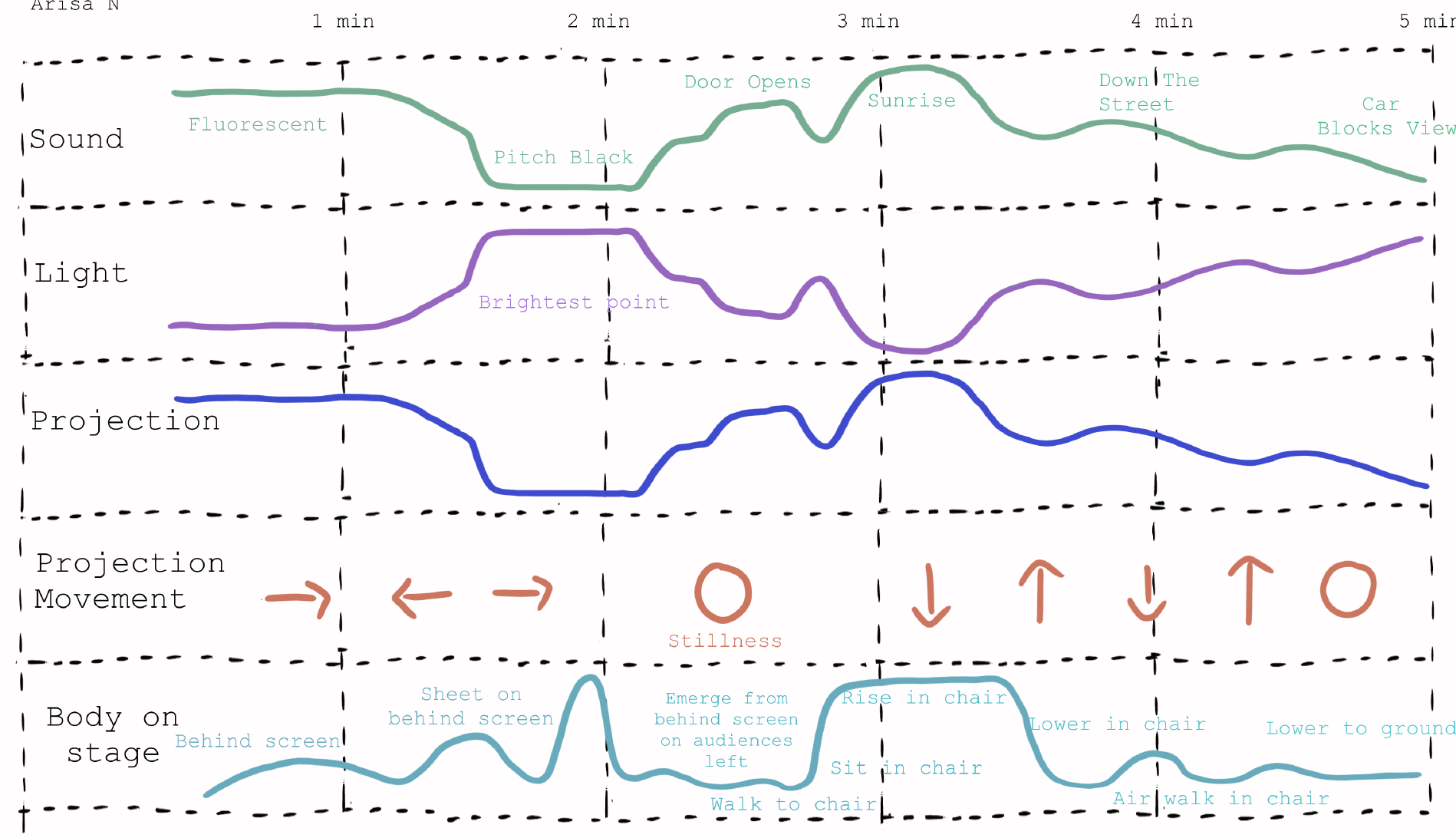Tracks ︎︎︎
We
tried this one semester in collaboration class and it’s been a go-to ever since...
Taking short and engaging (1 minute) clips of films, we had participants analyse specific tracks in the sequence (light, sound, movement, camera). These sequences were graphed on paper from right to left so that each track was on the one-minute timeline. Looking at the way the different elements moved through time- we could start to see how the tracks related, and where landmarks landed in the sequence.
Participants then created a new work (doesn’t have to be film) replacing the tracks with different material. For example, we might exchange light in the track for sound, movement for the track for light, etc. This process helps us look at how compositional elements work as a compound -or moments that seem to work because of the relationship between the parts, or the trajectory of sequences.
![]()
Taking short and engaging (1 minute) clips of films, we had participants analyse specific tracks in the sequence (light, sound, movement, camera). These sequences were graphed on paper from right to left so that each track was on the one-minute timeline. Looking at the way the different elements moved through time- we could start to see how the tracks related, and where landmarks landed in the sequence.
Participants then created a new work (doesn’t have to be film) replacing the tracks with different material. For example, we might exchange light in the track for sound, movement for the track for light, etc. This process helps us look at how compositional elements work as a compound -or moments that seem to work because of the relationship between the parts, or the trajectory of sequences.







